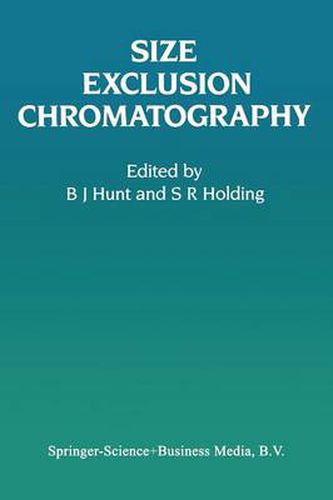Readings Newsletter
Become a Readings Member to make your shopping experience even easier.
Sign in or sign up for free!
You’re not far away from qualifying for FREE standard shipping within Australia
You’ve qualified for FREE standard shipping within Australia
The cart is loading…






This title is printed to order. This book may have been self-published. If so, we cannot guarantee the quality of the content. In the main most books will have gone through the editing process however some may not. We therefore suggest that you be aware of this before ordering this book. If in doubt check either the author or publisher’s details as we are unable to accept any returns unless they are faulty. Please contact us if you have any questions.
There is a large and increasing variety of polymers currently in use both for domestic and industrial applications. The properties of polymers are deter mined not only by their chemical type, but also by their molecular mass and molecular mass distributions. However, while the chemical type of polymers can be determined relatively easily, the average molecular masses and molecular mass distributions are more difficult to measure. The molecular mass averages of a polymer are measured by specialized and complex techniques such as light scattering (for weight average) and osmometry (for number average). Thus, complete characterization of the molecular mass distribution of a polymer by such means requires separating the sample into many fractions which can then be examined individually. Since size exclusion chromatography was introduced as a rapid and straightforward technique for the characterization of polymer molecular mass distributions, there have been tremendous increases in development and applications, and it was felt appropriate to bring together into a single volume the information required by scientists from many disciplines who wish to use the technique. This book should be useful to existing users, those who are new to the technique, and those who may be familiar with the basic technique and now wish to extend their capabilities to more complex applications (or to consider the potential of a number of related techniques). The book will also be of general interest to the experienced liquid chromatographer.
$9.00 standard shipping within Australia
FREE standard shipping within Australia for orders over $100.00
Express & International shipping calculated at checkout
This title is printed to order. This book may have been self-published. If so, we cannot guarantee the quality of the content. In the main most books will have gone through the editing process however some may not. We therefore suggest that you be aware of this before ordering this book. If in doubt check either the author or publisher’s details as we are unable to accept any returns unless they are faulty. Please contact us if you have any questions.
There is a large and increasing variety of polymers currently in use both for domestic and industrial applications. The properties of polymers are deter mined not only by their chemical type, but also by their molecular mass and molecular mass distributions. However, while the chemical type of polymers can be determined relatively easily, the average molecular masses and molecular mass distributions are more difficult to measure. The molecular mass averages of a polymer are measured by specialized and complex techniques such as light scattering (for weight average) and osmometry (for number average). Thus, complete characterization of the molecular mass distribution of a polymer by such means requires separating the sample into many fractions which can then be examined individually. Since size exclusion chromatography was introduced as a rapid and straightforward technique for the characterization of polymer molecular mass distributions, there have been tremendous increases in development and applications, and it was felt appropriate to bring together into a single volume the information required by scientists from many disciplines who wish to use the technique. This book should be useful to existing users, those who are new to the technique, and those who may be familiar with the basic technique and now wish to extend their capabilities to more complex applications (or to consider the potential of a number of related techniques). The book will also be of general interest to the experienced liquid chromatographer.